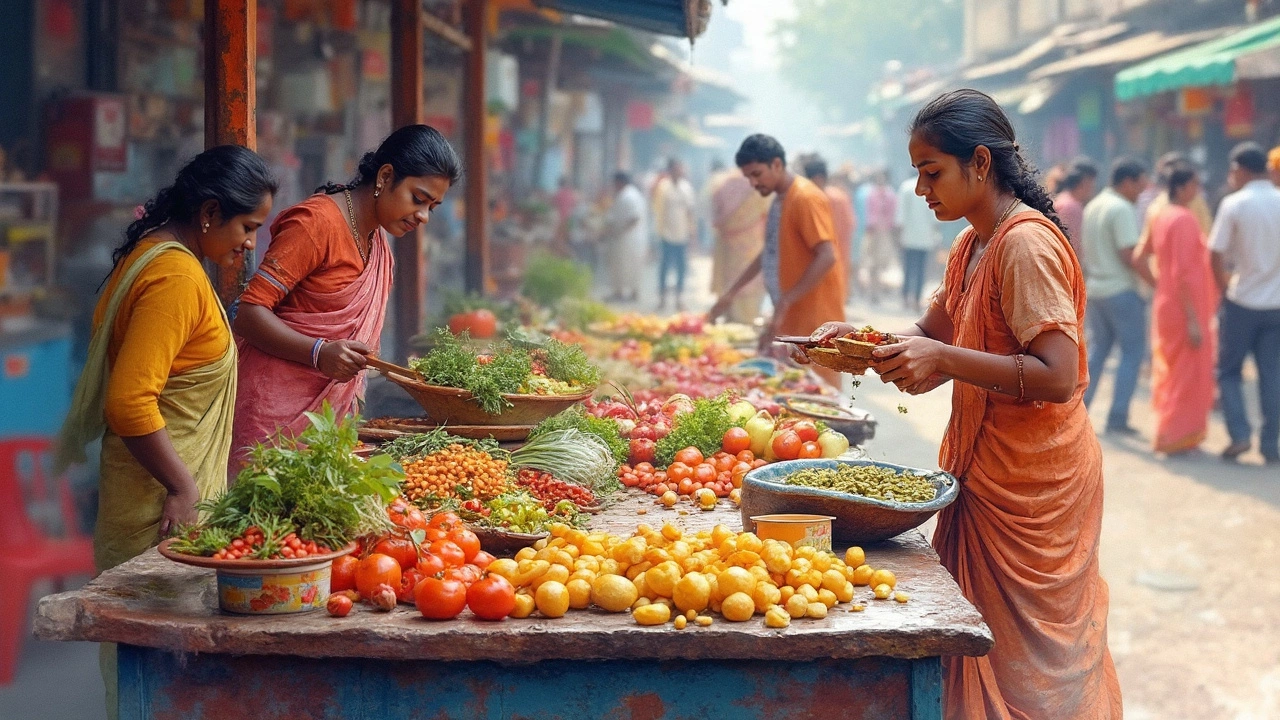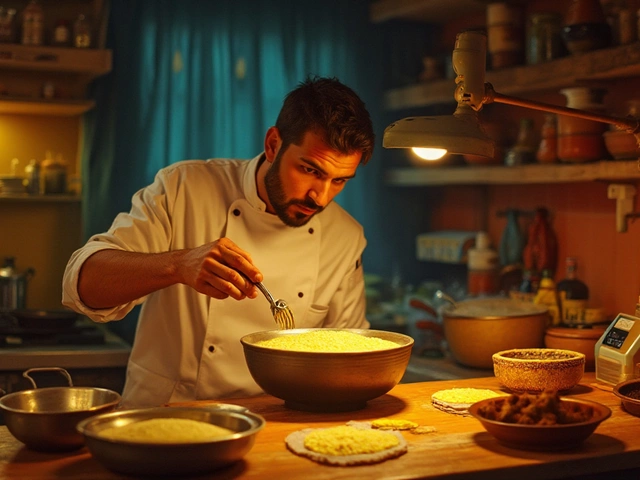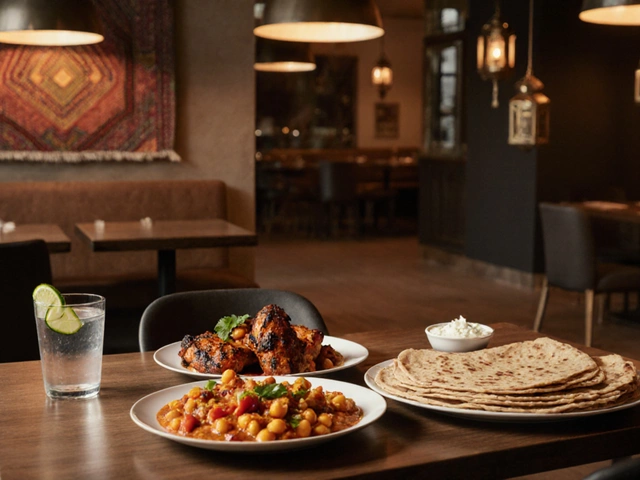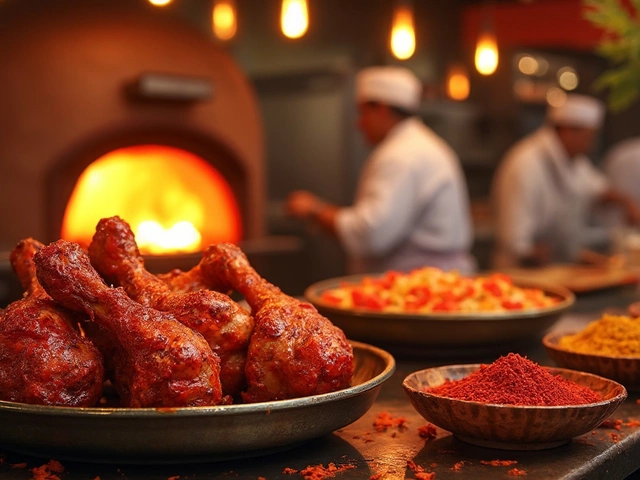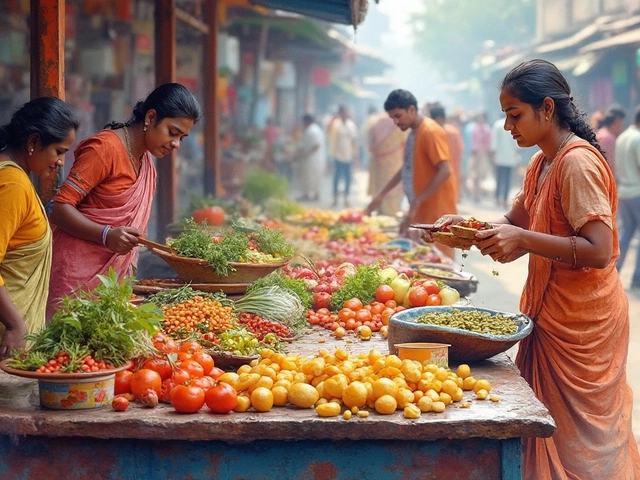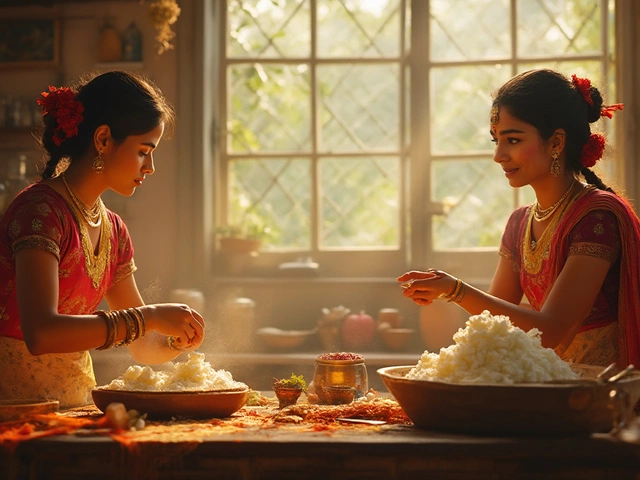Exploring the vibrant world of Indian street food can be a rollercoaster of flavors, colors, and aromas. It’s no wonder that travelers find themselves drawn to these bustling stalls offering everything from spicy chaats to buttery parathas. But let’s not pretend—behind the tantalizing scents, there might be a few stomach gremlins lurking. Understanding what foods to dodge can make your culinary journey a lot smoother.
One of the golden rules while roaming India’s street food paradise is caution with raw fruits and veggies. The trouble isn’t the food itself, but the water used to wash them, which could be contaminated. Peeling fruits yourself is a safe bet if you’re craving something fresh.
- Raw Fruits and Vegetables
- Unpasteurized Dairy Products
- Seafood from Coastal Regions
- Street Drinks and Ice
- Tips for Choosing Safe Stalls
- Best Practices for Street Food Adventurers
Raw Fruits and Vegetables
When it comes to street food in India, raw fruits and vegetables might seem harmless, but they hide a risk you might not expect. The issue isn’t with the produce itself but with how it's washed. Often, these are rinsed in untreated tap water, which can carry bacteria and viruses your stomach isn’t used to handling.
Consider this: while the streets of Delhi might offer an irresistible plate of sliced mangoes or cucumber, it’s all about being smart with choices. Peel fruits like bananas or oranges, where you get to remove the outer layer yourself. But if it’s pre-cut, it’s probably best left for someone with a local digestive system.
Here’s a pro tip: if you’re determined to enjoy a fresh salad or juicy piece of fruit, look for a vendor who uses bottled water for washing. It’s rare but worth seeking out. Alternatively, make sure you have cleaned your own fruit with a bit of bottled water before munching on it.
And, remember to watch out for those colorful street-side fruit juices. While they’re as tempting as chasing a rainbow, they’re often mixed with ice made from regular tap water, which could lead you to more time in the bathroom than exploring the sights.
- Choose fruits with peels: Bananas, oranges, and other fruits you can peel are safer bets.
- Avoid salads: Fresh vegetable salads are best skipped unless you know they’re washed properly.
- Be wary of juices: Stick to unopened, bottled drinks unless you're sure the juice is freshly squeezed in a clean place.
Unpasteurized Dairy Products
Ah, dairy! India is known for its delicious milk-based goodies, from creamy lassis to rich, satisfying paneer. But when it comes to taking a chance on dairy while hitting up the street food India scene, it’s worth being picky. Unpasteurized dairy products are not uncommon here, and they could put your tummy in a bit of a twist.
Pasteurization is a process that heats milk to a specific temperature to kill off harmful bacteria. When it’s not done, you risk encountering bugs like E.Coli or Salmonella. So, what should you do to keep your gut happy and safe?
- Check for packaging: If you’re buying something like yogurt or milk from a street vendor in a package, see if it's clearly labeled as pasteurized. No label? Best to skip it.
- Stick with boiled or heated dairy: Milk-based sweets and drinks that have been boiled, like masala chai or some creamy desserts, are generally safer bets since the heat takes care of most bacteria.
- Avoid the temptations of raw milk: This might sound obvious, but raw milk is risky business and it's better to pass on it entirely.
By keeping an eye on your dairy choices, you can still get a taste of India’s creamy side without any side effects you'd rather dodge.
Seafood from Coastal Regions
India's coastal regions like Goa, Kerala, and Tamil Nadu are famous for their delectable seafood offerings. However, indulging in street food seafood there requires some savvy choices. Freshness is key with any seafood, and it's crucial to ensure you’re getting just that.
Street stalls near the coast might seem like they're getting a fresh catch straight from the sea, but appearances can be deceiving. Temperature can make a big difference here. The tropical climate can spoil seafood quickly, causing it to harbor bacteria that could lead to foodborne illnesses, something you definitely want to avoid on a holiday.
If you’re a street food India enthusiast eager to try local seafood, watch where the stalls are storing their goods. Is it on ice? Does the ice look clean? You probably want to skip any that have seafood just lying out in the open under the sun. Also, eating fried seafood might be a safer option since the high heat can kill off most bacteria.
Another point to consider is the time of day. Buying seafood earlier in the day when it’s likely fresher can lower your risk. When in doubt, ask a local or your tour guide. They often know which stalls are safe and which ones to steer clear of.
If you're tempted by seafood curries or dishes made with fish, it’s generally better to opt for reputable restaurants or cafes you find through trusted sources, even if the beachside stalls look picturesque.
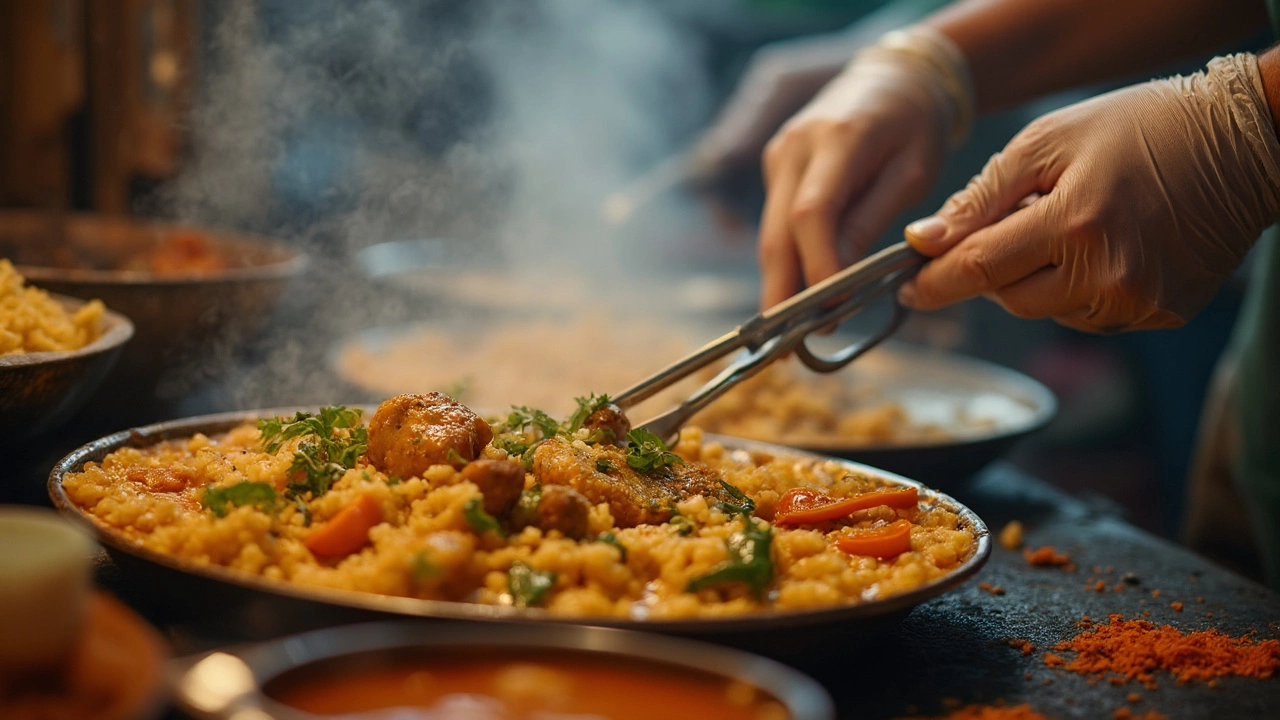
Street Drinks and Ice
When you're roaming the streets of India, the scorching sun can make those colorful drinks look oh-so-tempting. From sugary lemon sodas to the mysterious but delicious masala chai, there's something for everyone. But, here's the catch—the drinks are often made with local water and ice that might not meet the cleanliness standards your tummy is used to.
A safe approach is to stick to bottled beverages or enjoy hot drinks like tea or coffee since they're boiled, killing off potential bacteria. It helps to know that ice is often made from tap water, and unless you see it being cracked freshly from a newly opened, hygienically packed bag, it’s best to give it a pass.
"Drink packaged water when in doubt, and always see if the seal is intact," advises Dr. Arjun Patil, a renowned travel medicine expert.
Here are some tips to quench your thirst safely while enjoying street food India:
- Carry Your Own Bottle: It's more sustainable and ensures you know exactly what you're drinking.
- Go for Sealed Bottles: If you're buying bottled beverages, check the seal to ensure it's not tampered with.
- Freshly Squeezed Juices: If you can watch the whole process, from fruit to glass, you're more likely to avoid risky water. Just skip the ice!
Being cautious doesn’t mean missing out on fun. With a bit of attention to detail, you can enjoy all the flavors without having to worry about troublesome setbacks.
Tips for Choosing Safe Stalls
When wandering through the vibrant tapestry of India's street food markets, making smart choices can be the difference between a memorable meal and an unfortunate mishap. Here are some tips to help ensure you’re picking the right place to dig into those delicious bites and sidestepping potential tummy troubles.
First off, follow the crowd. If you see a line forming at a stall, it's generally a good sign. High turnover means fresher ingredients and less chance of anything lingering around to develop nasties. Plus, more people usually means the food’s trusted by locals—which is always a reassuring sign.
Next, pay attention to hygiene practices. Check if the vendor is wearing gloves or using utensils when handling food. It's also wise to see if the cooked food is covered to keep flies and dust at bay. Stalls with a rigorous cleanliness routine are your best bet for avoiding any unwanted surprises.
- Street food India often involves communal seating or stand-up counters. Opt for stalls that seem well-maintained and clean.
- Watch how food is stored and prepared. Raw ingredients, especially seafood from coastal regions, should be properly refrigerated, not just sitting out in the sun.
If you're thinking of trying street drinks or snacks, fresh is best! Order dishes that are made to order, as these are less likely to have been sitting out too long. And steer clear of street drinks with ice, unless you're confident it's made from filtered water.
You might also want to ask locals or guides for recommendations. They often know where to get the best, and safest, bites around town. Engaging with locals can not only enhance the culinary journey but ensures you’re in safe hands.
| Element to Consider | Why It's Important |
|---|---|
| Crowded Stalls | High turnover means fresher food |
| Vendor Hygiene | Proper handling reduces contamination risk |
| Freshly Cooked Food | Less time for bacteria to grow |
| Local Recommendations | Insider knowledge on quality and safety |
By paying close attention and trusting your instincts, you can feast on Indian cuisine without worrying about food safety. After all, part of the adventure is experiencing the street food in its full, flavorful glory—just without the stomachache, please.
Best Practices for Street Food Adventurers
You’re about to embark on a culinary adventure through India’s street food scene, and to make sure it’s smooth sailing, here are some tried-and-true strategies. First off, trust your senses—if something looks or smells off, give it a pass. When it comes to picking stalls, go where the locals go. A busy stall indicates a high turnover of food, so you're less likely to get something stale.
Timing also matters. Eating at peak meal times increases the chances of fresher food. Aim to hit up street stalls during local lunch or dinner periods, rather than in the lull between lunch and dinner.
When enjoying your food, opt for hot items. Dishes that are thoroughly cooked and steaming are less likely to harbor harmful bacteria. Avoid foods sitting out at room temperature, like some sweets or precooked snacks.
- Stay hydrated wisely: Only drink bottled water from a reliable brand, and if you're thirsty, stick to hot chai rather than street-brewed drinks or juices with ice.
- Tools of the trade: Pack some hand sanitizer and use it often, especially before eating.
- Know your limits: Indian street food can be spicy and intensely flavored. Don’t be afraid to ask for a milder version if you're testing the waters.
Finally, word of mouth is powerful. Ask around—talk to locals, fellow travelers, or even your accommodation host about their favorite spots.





